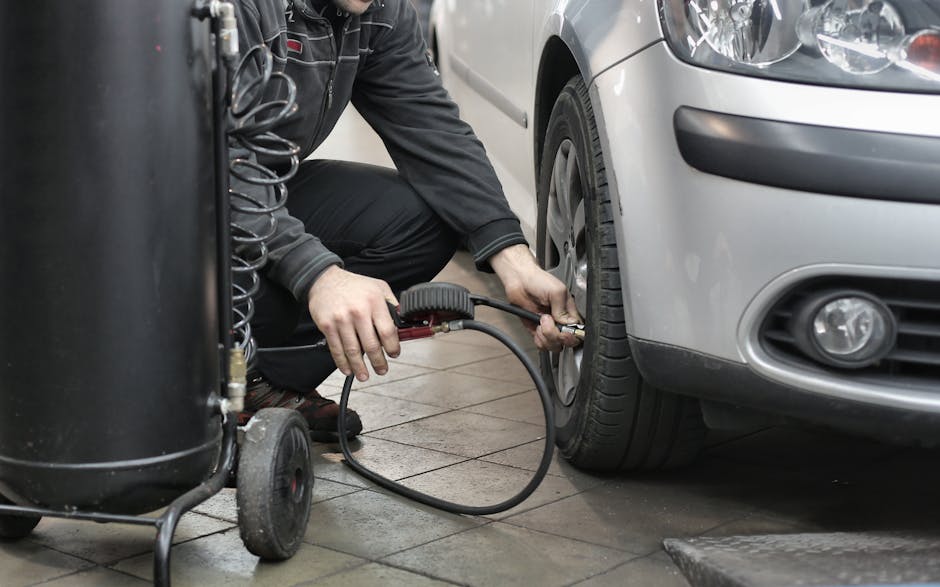How Car Tire Pressure Monitoring Systems Work
Introduction
Maintaining proper tire pressure is crucial for vehicle safety, fuel efficiency, and tire longevity. Underinflated or overinflated tires can lead to poor handling, increased braking distances, and even blowouts. To address this, modern vehicles are equipped with Tire Pressure Monitoring Systems (TPMS), which alert drivers when tire pressure falls outside the recommended range.
This article explores how TPMS works, the different types of systems, their benefits, and potential limitations.
Types of Tire Pressure Monitoring Systems
There are two main types of TPMS:
1. Direct TPMS
Direct TPMS uses pressure sensors installed inside each tire (typically mounted on the valve stem or wheel rim). These sensors continuously monitor tire pressure and transmit real-time data to the vehicle’s onboard computer.
How Direct TPMS Works:
- Each wheel contains a battery-powered sensor that measures air pressure (and sometimes temperature).
- The sensor sends radio frequency (RF) signals to a central receiver in the car.
- The vehicle’s computer processes this data and triggers a dashboard warning if pressure is too low or too high.
Advantages of Direct TPMS:
✔ Highly accurate – Provides real-time pressure readings.
✔ Individual tire monitoring – Detects which specific tire is underinflated.
✔ Temperature monitoring – Some sensors also track tire temperature, which can affect pressure.
Disadvantages of Direct TPMS:
✖ Higher cost – Sensors are expensive to replace if damaged.
✖ Battery life – Sensor batteries typically last 5-10 years before needing replacement.
2. Indirect TPMS
Indirect TPMS does not use physical pressure sensors. Instead, it relies on the vehicle’s Anti-lock Braking System (ABS) wheel speed sensors to estimate tire pressure based on rotational differences.
How Indirect TPMS Works:
- The system monitors the speed of each wheel.
- An underinflated tire has a slightly smaller diameter, causing it to rotate faster than properly inflated tires.
- The ABS sensors detect this speed discrepancy and trigger a warning light.
Advantages of Indirect TPMS:
✔ Lower cost – No additional sensors are needed.
✔ No battery replacements – Uses existing ABS sensors.
Disadvantages of Indirect TPMS:
✖ Less precise – Cannot provide exact pressure readings.
✖ Requires recalibration – Must be reset after tire rotations or inflation adjustments.
Why TPMS Is Important
1. Safety Benefits
- Prevents blowouts – Properly inflated tires reduce the risk of sudden tire failure.
- Improves handling – Correct pressure ensures optimal traction and stability.
- Shortens braking distances – Underinflated tires increase stopping distance.
2. Fuel Efficiency
- Low tire pressure increases rolling resistance, reducing gas mileage by up to 3%.
- Properly inflated tires improve fuel economy.
3. Tire Longevity
- Underinflation causes uneven tread wear, shortening tire lifespan.
- Overinflation leads to a harsher ride and increased wear in the center of the tread.
Common TPMS Issues & Maintenance Tips
1. False Alarms
- Extreme temperature changes can temporarily alter tire pressure, triggering warnings.
- Always check pressure manually if the TPMS light comes on.
2. Sensor Failures
- Dead batteries or damaged sensors can disable the system.
- If the TPMS warning light flashes, it may indicate a malfunction.
3. Resetting the System
- After inflating or rotating tires, some systems require a reset procedure (usually found in the owner’s manual).
4. Regular Pressure Checks
- Even with TPMS, manually check tire pressure at least once a month.
Future of TPMS
As automotive technology advances, TPMS is becoming more sophisticated:
- Smartphone integration – Some systems send alerts directly to a driver’s phone.
- Self-inflating tires – Future vehicles may include automatic air pumps to maintain optimal pressure.
- AI-based monitoring – Predictive algorithms could detect slow leaks before they become dangerous.
Conclusion
Tire Pressure Monitoring Systems are a vital safety feature that helps drivers maintain proper tire inflation, improving vehicle performance, fuel efficiency, and safety. Whether your car uses Direct TPMS (with sensors) or Indirect TPMS (via ABS data), understanding how the system works ensures you can respond appropriately to warnings.
Regular manual pressure checks, proper sensor maintenance, and staying informed about TPMS advancements will keep your tires—and your vehicle—in optimal condition.
Would you like recommendations for the best TPMS tools or troubleshooting tips? Let us know in the comments! 🚗💨

